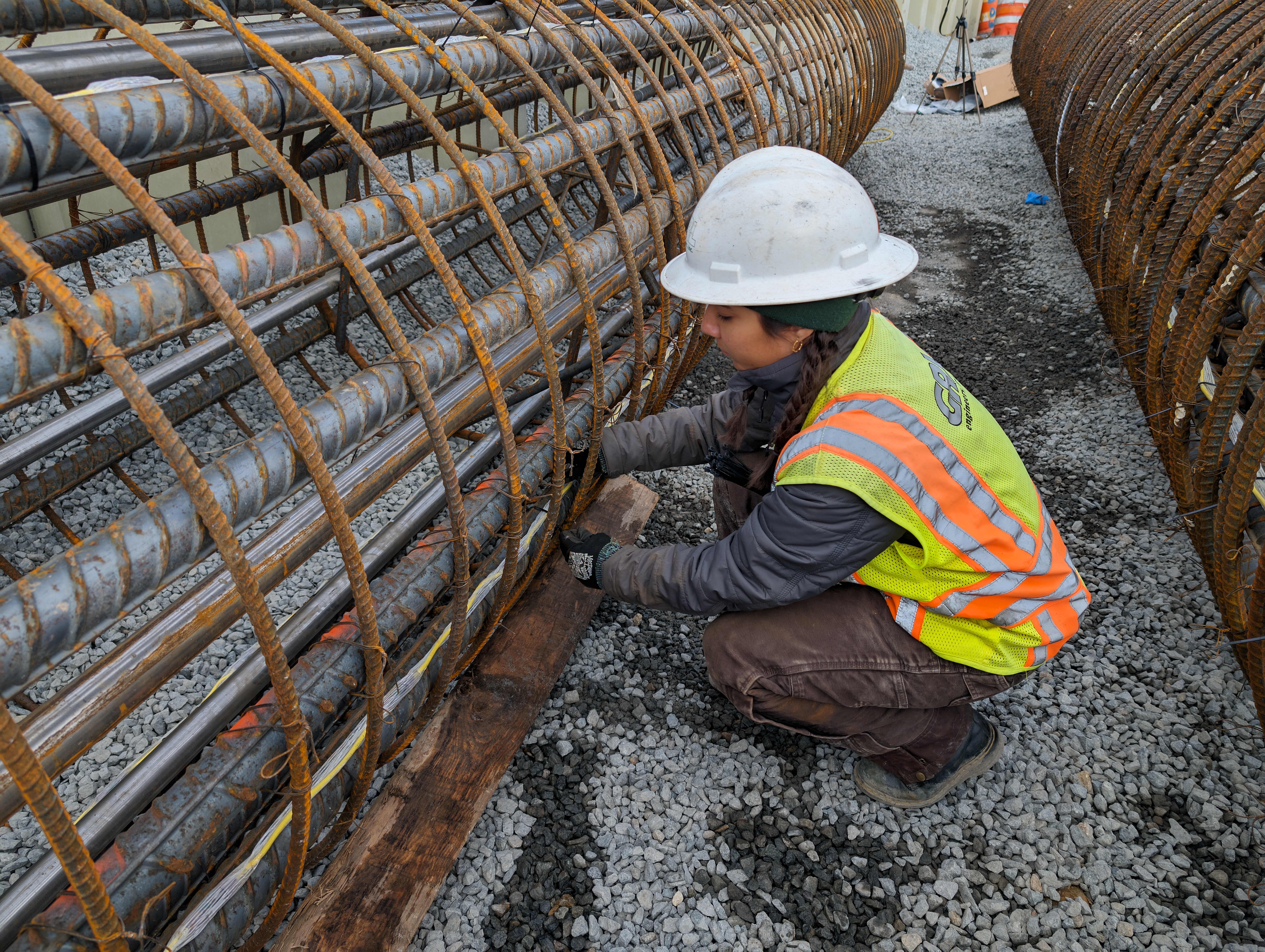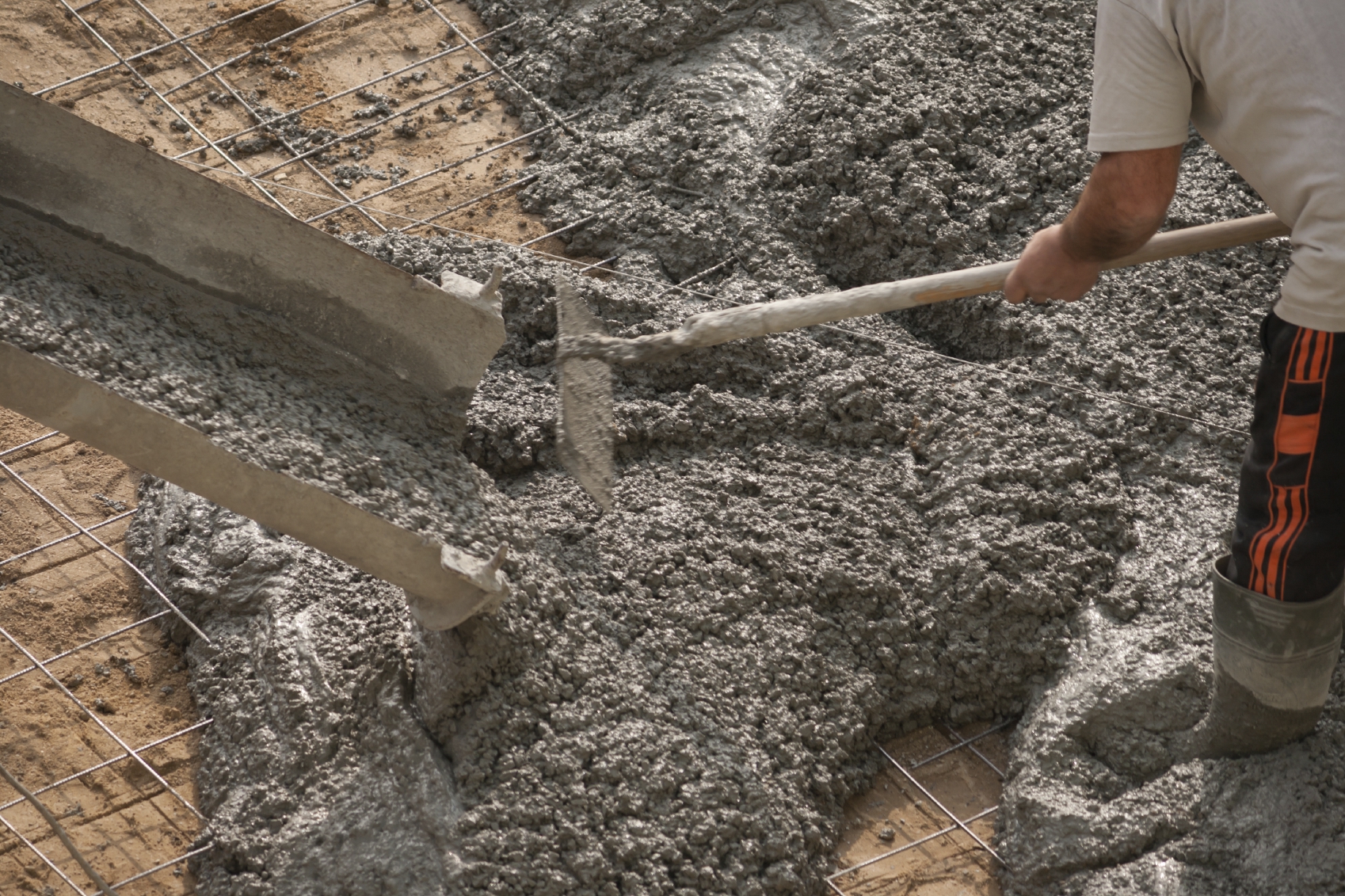West Coast General Engineering industrial concrete Rancho Cucamonga: Cost-Benefit Analysis for Commercial Facilities
West Coast General Engineering industrial concrete Rancho Cucamonga: Cost-Benefit Analysis for Commercial Facilities
Blog Article
The Crucial Function of Concrete Structure in Structural Integrity and Long Life
When it comes to building a building, the foundation is a lot more essential than you may assume. Concrete foundations provide unparalleled toughness and resilience, guaranteeing your framework can stand up to numerous ecological challenges. Without a solid base, you run the risk of prospective issues like moving or cracking, which can jeopardize safety and value. Comprehending the nuances of concrete foundations might be the secret to preserving your investment for many years to come. What should you take into consideration following?
Comprehending the Significance of Concrete Foundations
Concrete foundations are essential to the overall stability of any kind of framework, as they supply the vital assistance needed to endure different lots and environmental conditions. When you think of building a home or a business area, the foundation is the initial thing you ought to think about. It acts as a barrier versus moisture, protecting your residential property from water damages. A well-placed concrete foundation additionally avoids settling and shifting, which can cause splits in walls and floors. You'll wish to ensure that the foundation is effectively made and reinforced, as this influences the long life of your building. Furthermore, a solid structure can enhance energy effectiveness by minimizing air leakages. Remember, overlooking the importance of a concrete structure can bring about costly repairs down the line. Investing in a quality structure upfront is essential for the integrity and sturdiness of your framework.
Benefits of Concrete Foundations for Architectural Stability
While many elements contribute to a building's architectural integrity, concrete structures provide unmatched sturdiness and strength. You'll appreciate that concrete can stand up to extreme climate problems, standing up to both wetness and temperature fluctuations. This durability implies your framework is less most likely to experience splitting or changing with time, which can compromise its safety.Additionally, concrete's fundamental weight gives a strong base, protecting against movement during all-natural occasions like quakes or floodings. When you select a concrete structure, you're likewise choosing low upkeep; unlike wood, it will not rot or bring in parasites, saving you money and time in repairs.Moreover, concrete's fire resistance supplies added safety, ensuring your framework can sustain high temperature levels without substantial damage. In general, purchasing a concrete foundation implies you're prioritizing the long-term stability and honesty of your structure, making it a sensible option for any type of building project.
Usual Kinds Of Concrete Foundations
When it concerns developing structures, comprehending the typical types of concrete foundations can aid you make informed selections for your task. One of the most common types consist of slab-on-grade, crawl area, and complete cellar foundations.A slab-on-grade structure is a straightforward, economical option, where a thick concrete slab is put straight on the ground. This type works well in cozy climates, as it reduces heat loss.Crawl area structures raise the home a little above ground, enabling air flow and accessibility to plumbing and electrical systems. This layout can help avoid moisture issues.Full basement foundations supply additional living or storage area while supplying exceptional structural assistance. They call for more excavation and are typically made use of in cooler environments to stop frost heave.
Elements to Think About When Creating a Concrete Structure

Best Practices for Putting Up Concrete Foundations
When you're installing a concrete foundation, appropriate site preparation is necessary to ensure security (West Coast General Engineering concrete foundation). You'll additionally need to understand support strategies to boost toughness and toughness. Ultimately, don't ignore the healing procedure, as it plays a basic role in achieving a strong structure
Site Preparation Relevance
It might appear straightforward, appropriate site prep work is crucial for guaranteeing a solid and sturdy concrete structure. Start by removing the location of any particles, greenery, or organic material that could endanger the foundation's integrity. Next off, examine the soil type and compaction; you could require to excavate or include products to produce a secure base. Degree the ground to guarantee even weight circulation and prevent resolving issues later on. Mounting correct water drainage systems is also necessary to protect against water accumulation, which can damage the foundation gradually. Mark out the foundation's measurements accurately to lead the pouring procedure. By complying with these actions, you'll establish the phase for an effective concrete structure that stands the examination of time.
Reinforcement Strategies Clarified
Once the site is correctly prepared, the next action in guaranteeing a sturdy concrete foundation includes applying effective reinforcement methods. You must begin by using steel rebar, which offers tensile strength and aids avoid fracturing. Lay the rebar in a grid pattern, ensuring it rises making use of spacers to maintain proper insurance coverage. In addition, consider utilizing cord mesh for extra support, particularly in locations based on heavy tons. Do not forget to connect the rebar intersections firmly with cord. For larger foundations, fiber reinforcement can boost resilience, decreasing the danger of contraction fractures. Always follow local building ordinance and standards to make sure compliance. By using these support methods, you'll greatly increase your structure's toughness and durability, laying a strong groundwork for your structure.
Treating Process Basics
To ensure your concrete foundation remedies correctly, it is very important to preserve sufficient moisture and temperature problems immediately after pouring. Start by covering the surface area with a damp cloth or plastic sheet to preserve moisture. This maintains the concrete moisturized, stopping fractures and making sure strength. You need to additionally monitor the temperature; perfect healing conditions are between 50 ° F and 90 ° F. If it's as well warm, haze the surface area regularly to stop fast evaporation. For cold click to read climate, consider using shielding coverings to preserve warmth. Objective for a healing duration of a minimum of seven days, as this is crucial for ideal strength growth. By complying with these ideal techniques, you'll improve your structure's sturdiness and durability, ensuring architectural integrity for several years ahead.
Maintenance of Concrete Foundations for Long Life
To maintain your concrete foundation solid and enduring, regular examinations are vital. You must additionally ensure effective drainage services are in place to protect against water damages. If you find any kind of fractures, addressing them without delay will save you from larger troubles down the line.

Regular Examinations and Evaluations
While normal assessments and assessments could seem like a job, they're important for preserving the honesty of your concrete foundation. By regularly looking for fractures, shifts, or indicators of wear, you can capture potential problems before they escalate into pricey repairs. Try to find any kind of water pooling around the foundation or unusual settling, as these can indicate underlying issues. It's also a good idea to monitor any kind of changes in your home's structure, like doors that stick or home windows that don't open smoothly. Keeping a document of your evaluations assists track adjustments gradually, permitting for proactive upkeep. Inevitably, these evaluations guarantee your structure continues to be stable, sustaining the long life and security of your whole structure. Don't overlook this vital facet of homeownership!
Efficient Drain Solutions
Normal evaluations can expose issues like drain problems that may endanger your concrete structure's stability. To stop water build-up, assure your gutters and downspouts straight water far from the foundation. Installing French drains pipes can efficiently reroute surface and groundwater, reducing stress on your structure walls. Additionally, rating the dirt around your home helps guarantee that water moves away, instead of pooling near your foundation.Consider utilizing sump pumps in areas vulnerable to flooding, as they proactively get rid of excess water. Routinely check for obstructions in drain systems and clear them promptly. You'll safeguard your foundation's honesty and long life by taking these positive actions. Bear in mind, reliable drainage solutions are important for maintaining a strong, resilient concrete structure.
Motivate Fracture Services
When you discover fractures in your concrete structure, addressing them promptly is necessary for preserving its longevity. Little splits can quickly advance into larger problems, compromising the architectural Recommended Reading honesty of your home. Consistently examine your foundation for signs of damages, such as horizontal or upright splits. If you identify any, don't wait-- fix them immediately. You can make use of epoxy shots or concrete patching substances, which are reliable for securing cracks. Constantly follow the manufacturer's guidelines and think about consulting a specialist for significant damages. Remember, prompt repair services not just improve your structure's toughness but likewise conserve you cash over time by avoiding extra substantial repair services down the line. Stay positive, and your structure will stay solid and safe and secure.
Dealing With Typical Issues With Concrete Foundations
Concrete structures can deal with numerous problems with time, making it essential to recognize and resolve them without delay. Among one of the most typical issues is cracking, which can take place because of temperature changes or resolving dirt. If you notice fractures, it's important to evaluate their size and deepness; tiny fractures can commonly be secured, while larger ones may call for professional evaluation.Water breach is one more significant worry. Excess moisture can lead to mold growth and structural wear and tear. Warranty appropriate drain around your foundation to mitigate this danger. Additionally, seek indicators of changing or bowing wall surfaces, as this can show underlying problems with your foundation's stability.Regular inspections are basic to catch these problems early. If you find any type of worrying indicators, don't wait to get in touch with a structure professional. By staying positive, you can maintain the stability and durability of your concrete structure, assuring your home stays safe and safe and secure.
Often Asked Questions
How Does Soil Kind Influence Concrete Foundation Efficiency?
Soil kind considerably affects concrete structure performance. If you've obtained extensive clay, for example, it can trigger changing and fracturing. Sandy dirt may lead to resolving. Recognizing your soil aids guarantee a stable foundation.
Can Concrete Foundations Be Fixed if Damaged?
Yes, you can fix damaged concrete view it now foundations. Relying on the degree of the damages, methods like epoxy shot or slab jacking can recover security. It's finest to get in touch with a professional for efficient solutions.
What Is the Normal Lifespan of a Concrete Structure?
A concrete foundation normally lasts 30 to 100 years, relying on aspects like soil conditions, climate, and maintenance. You'll desire to watch on it to ensure it stays healthy throughout its lifespan.
Exist Alternative Products to Concrete for Foundations?
Yes, there are choices to concrete for foundations, like steel, timber, and even recycled materials. Each option has one-of-a-kind benefits and drawbacks, so you need to consider your task's particular requirements when selecting the appropriate material.
Just How Does Climate Impact Concrete Foundation Resilience?
Climate substantially affects concrete structure longevity (West Coast General Engineering industrial concrete Rancho Cucamonga). Severe temperatures, dampness, and freeze-thaw cycles can damage the material, causing splits and architectural concerns. You should consider regional climate problems when preparing your structure to guarantee long-term efficiency
Report this page